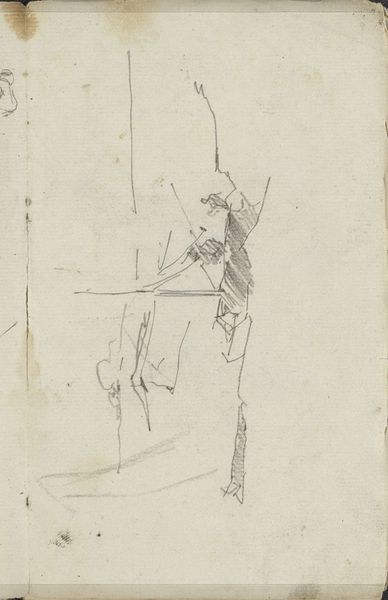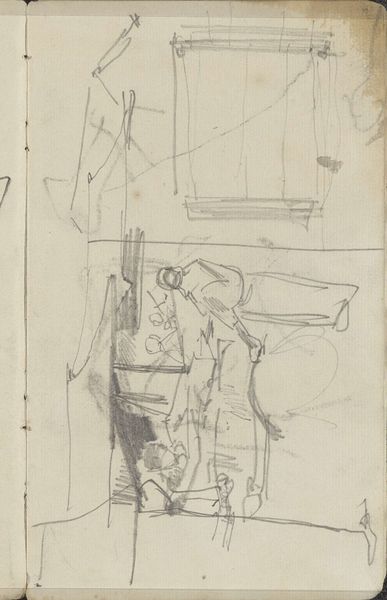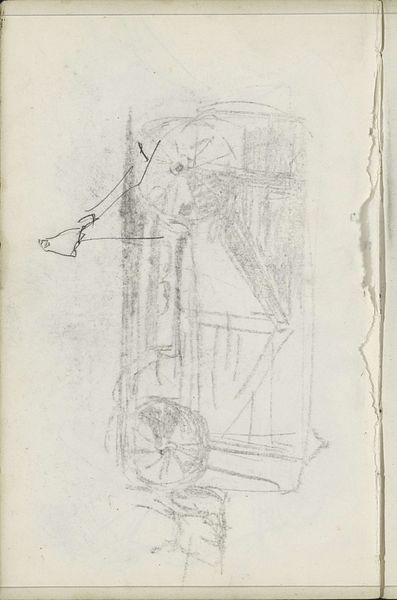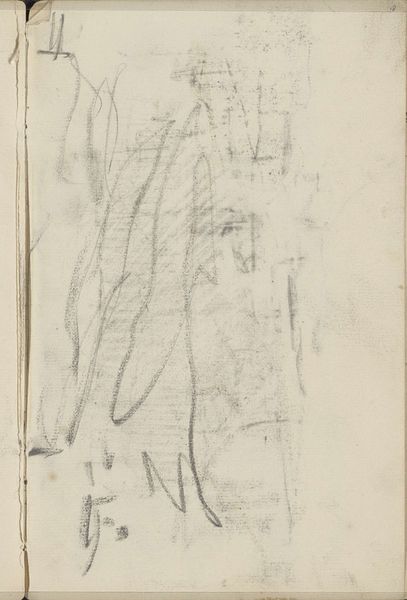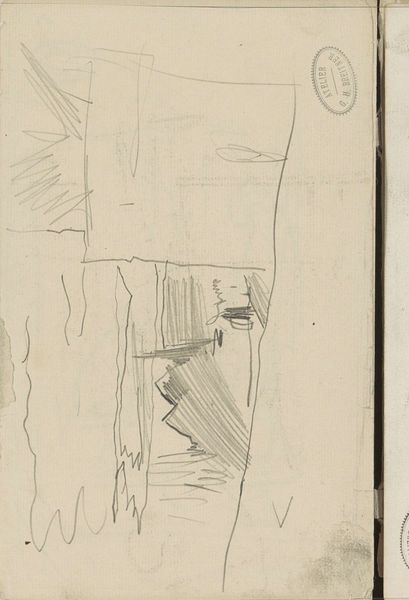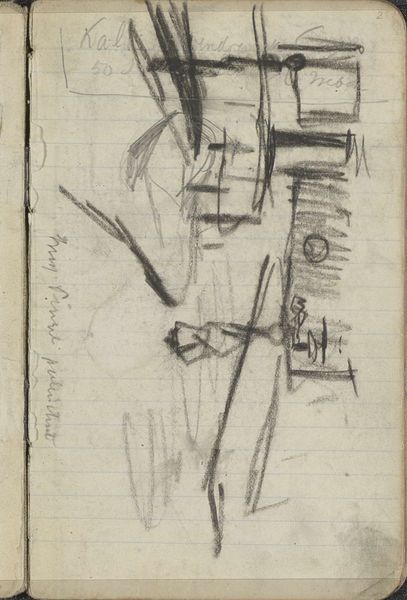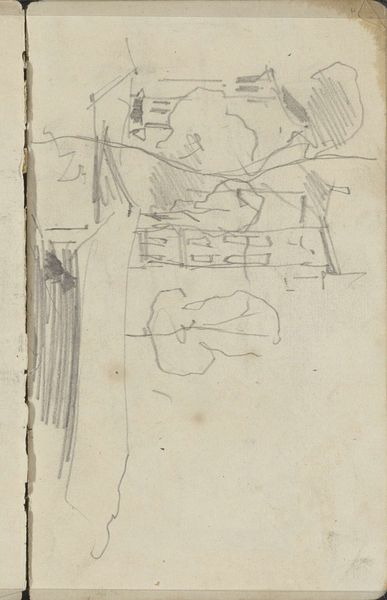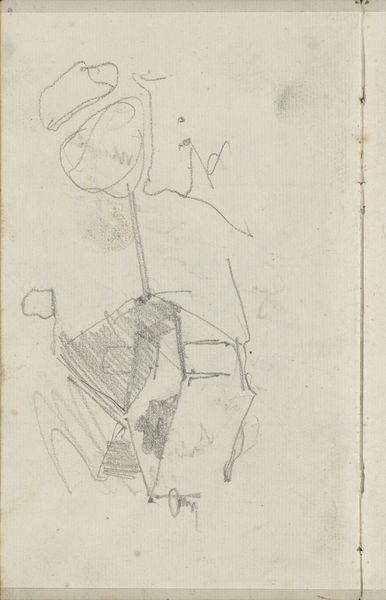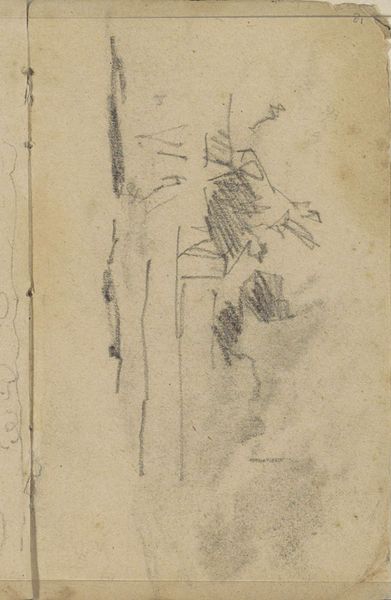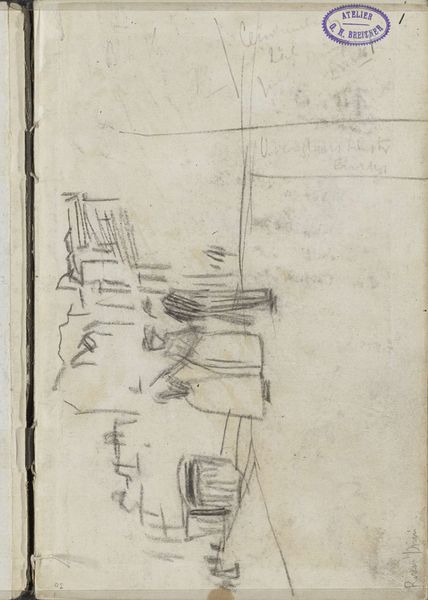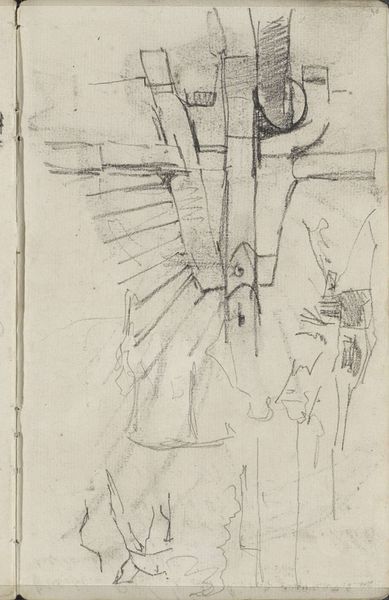
Copyright: Rijks Museum: Open Domain
Editor: So, this is "Interieur met figuren" by Carel Adolph Lion Cachet, made around 1895. It's a pencil drawing on paper. It feels really…sketchy. Almost like a ghost of a scene. What do you see in it? Curator: The beauty of a sketch like this lies in its suggestive power. It's not just what's there, but what it evokes. Consider the 'figures' themselves. Barely formed, almost spectral. To me, they resonate with the burgeoning interest in spiritualism and the unseen world during the late 19th century. It’s as though Cachet is capturing a fleeting moment, a trace of a presence. Editor: Spiritualism, interesting. So the haziness might be intentional? I just thought it was unfinished. Curator: Perhaps both. The Impressionists were also deeply concerned with capturing the ephemeral. The visible and the invisible blur here. Notice how the lines suggest depth, but also create a flattened effect. And the plant, standing centrally…does it perhaps symbolize growth, aspiration, yet rootedness within the domestic sphere? What kind of meaning can you attach to this specific depiction, the symbolic content of this central object? Editor: Hmm, I hadn't thought of the plant that way. More just…decoration. Now I'm wondering if it’s reaching for something, or maybe trapped inside. Curator: Precisely! It’s about prompting a dialogue, isn't it? A constant reassessment of what symbols can hold. Consider how cultural memory shapes what we perceive in that image. Editor: That makes sense. It's more than just a quick sketch; it's a doorway into the artist's mind and the culture he was a part of. Thanks, that gave me a lot to think about. Curator: My pleasure. And remember, these interpretations are not fixed. The power of art resides in its enduring ability to elicit new meanings, again and again, throughout time.
Comments
No comments
Be the first to comment and join the conversation on the ultimate creative platform.
